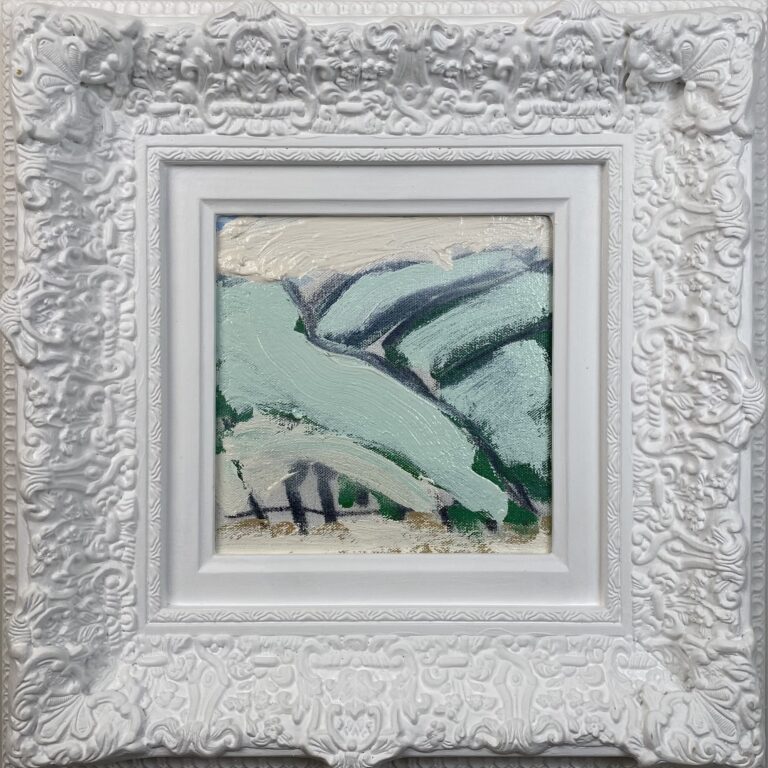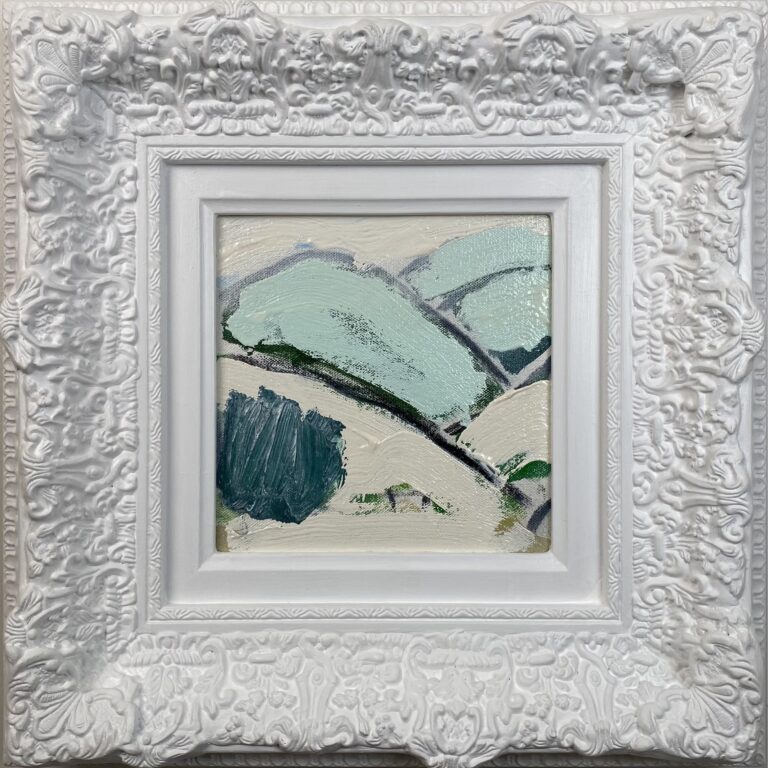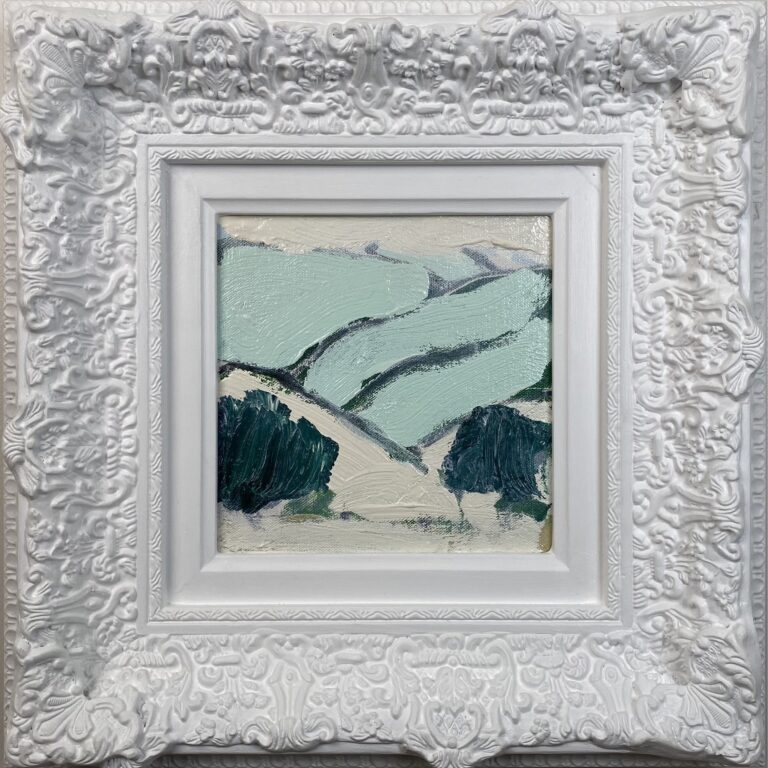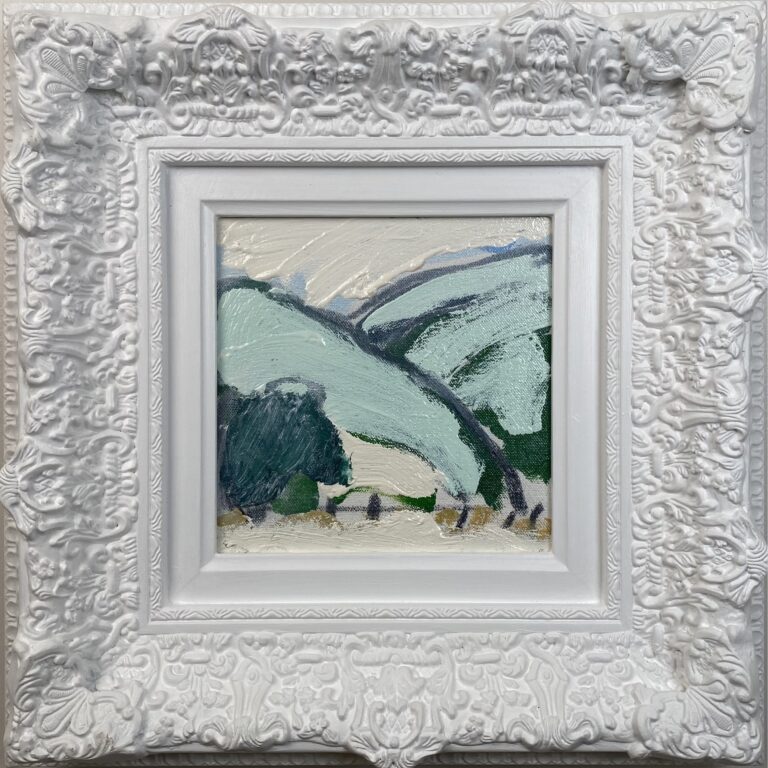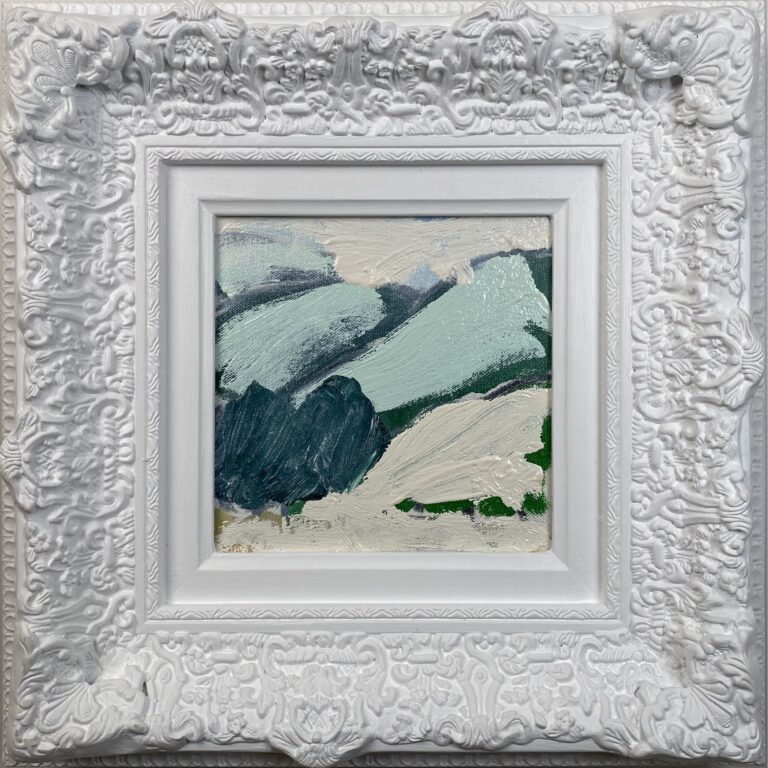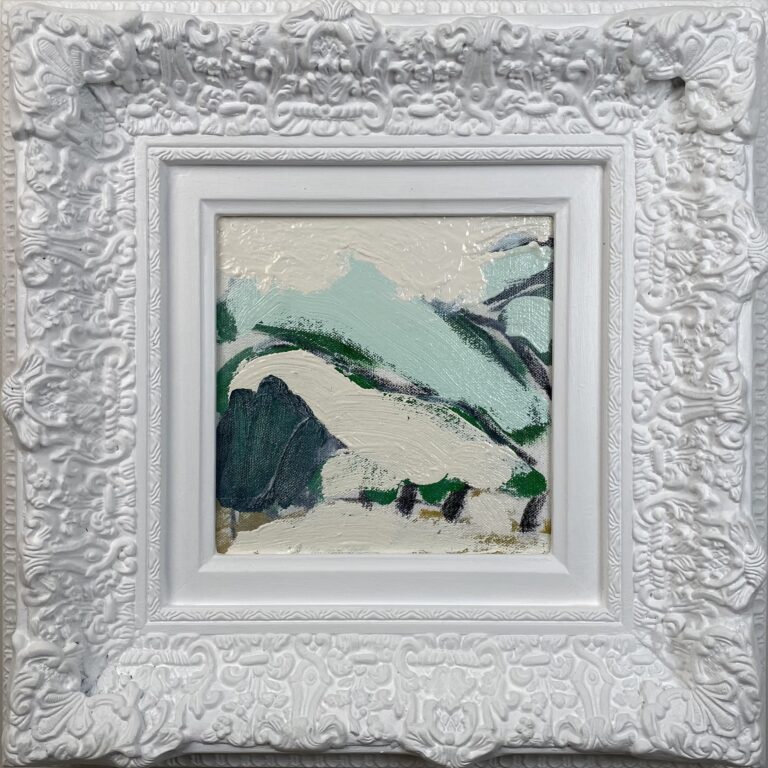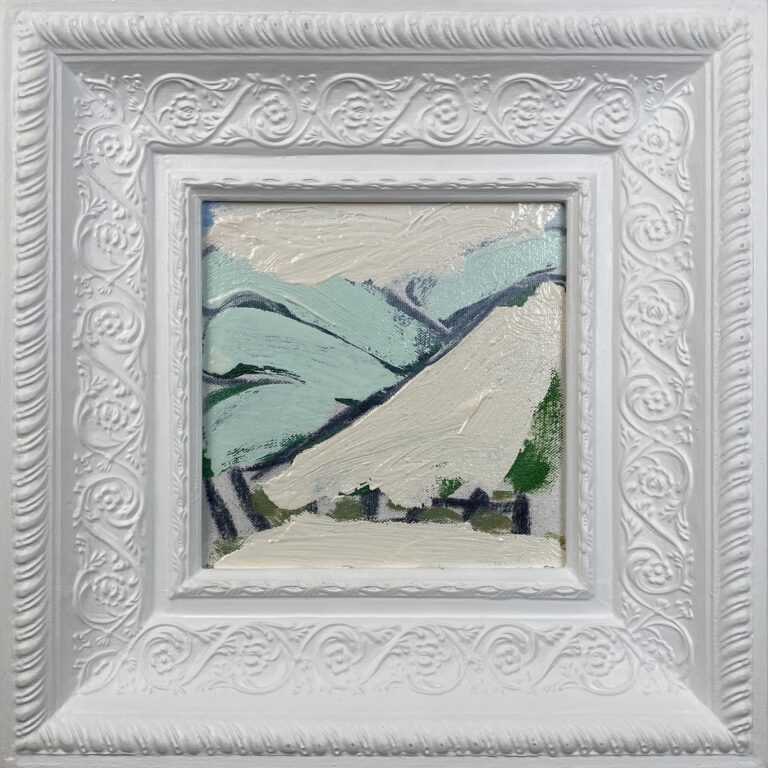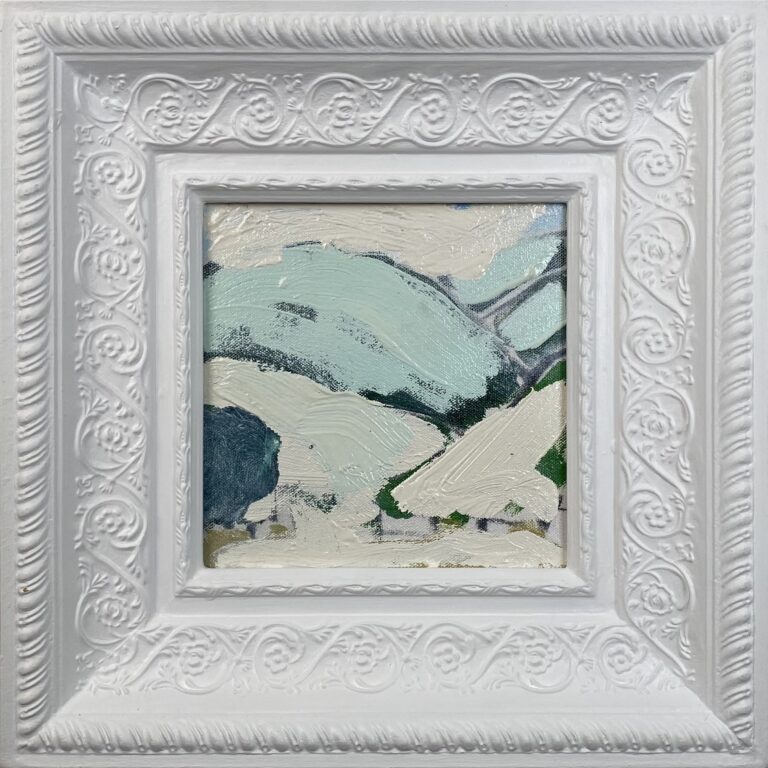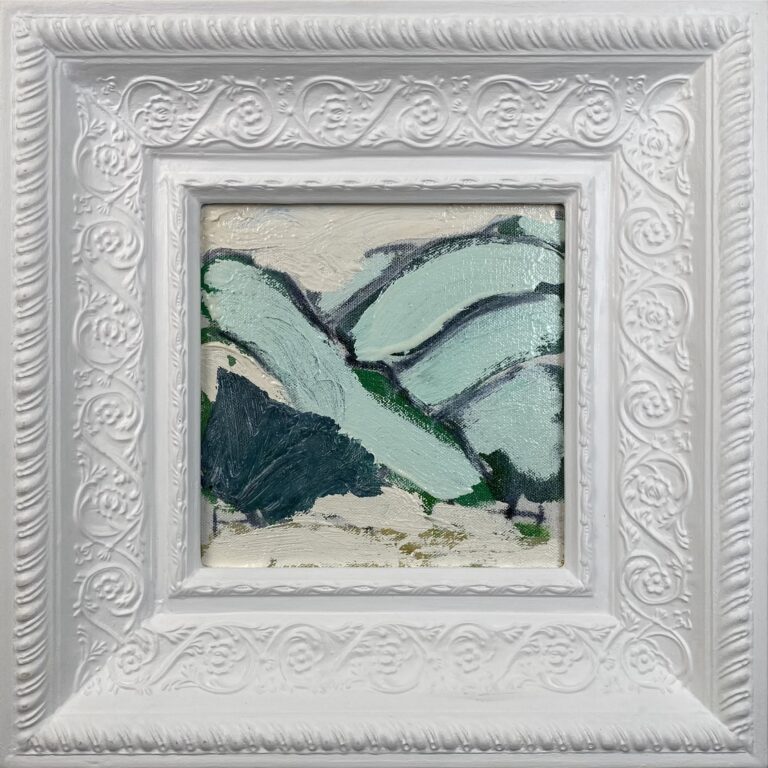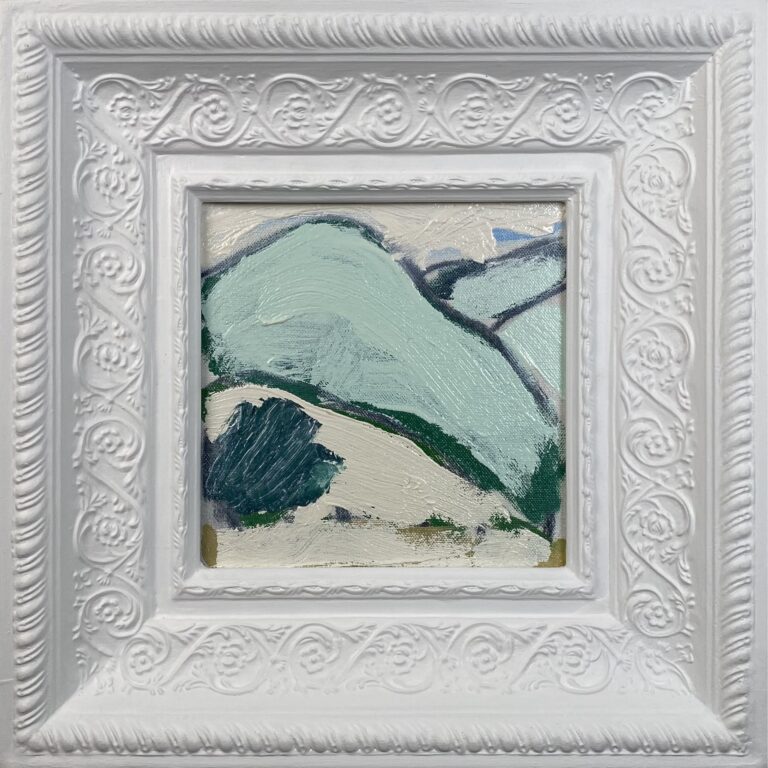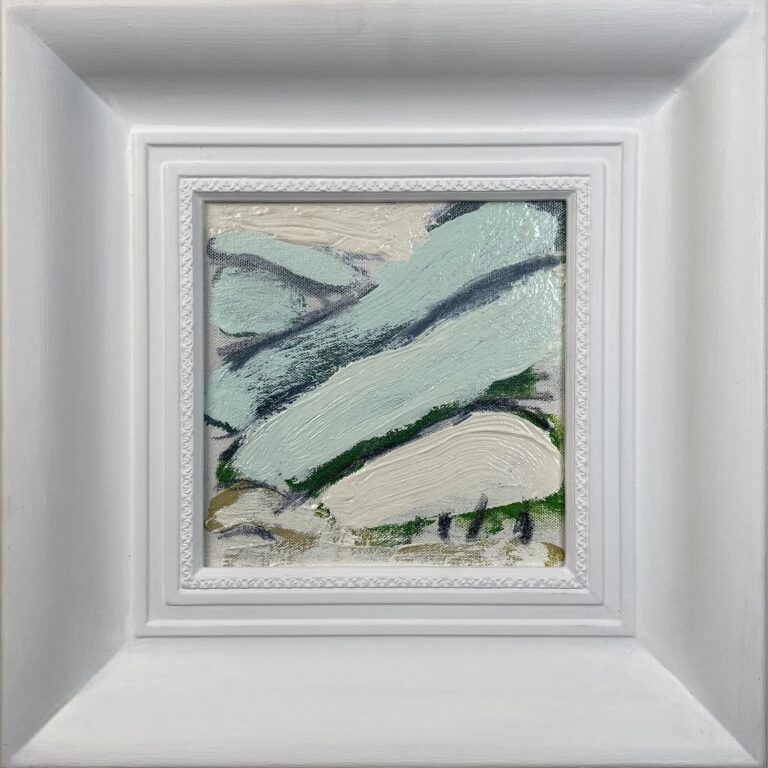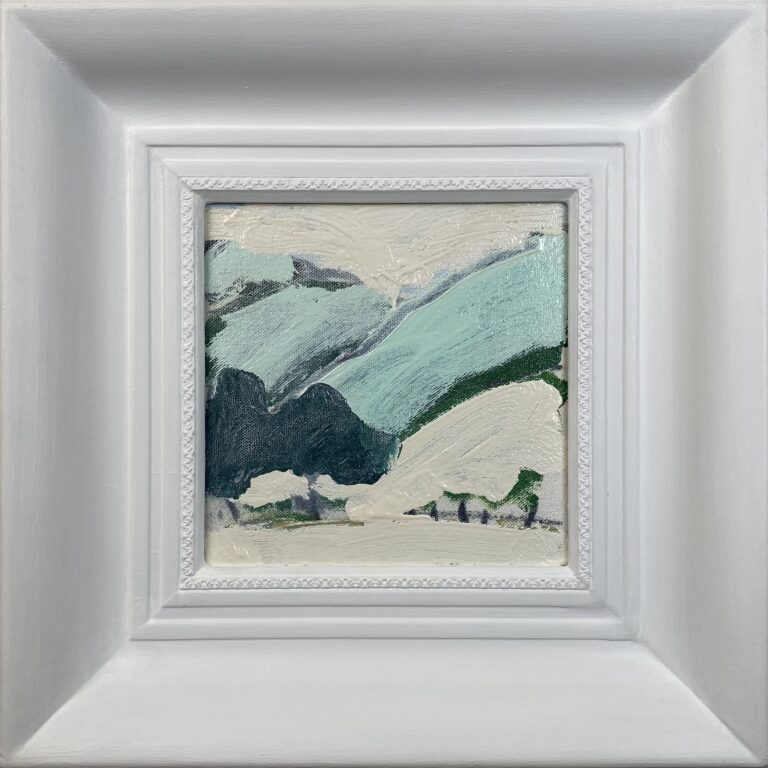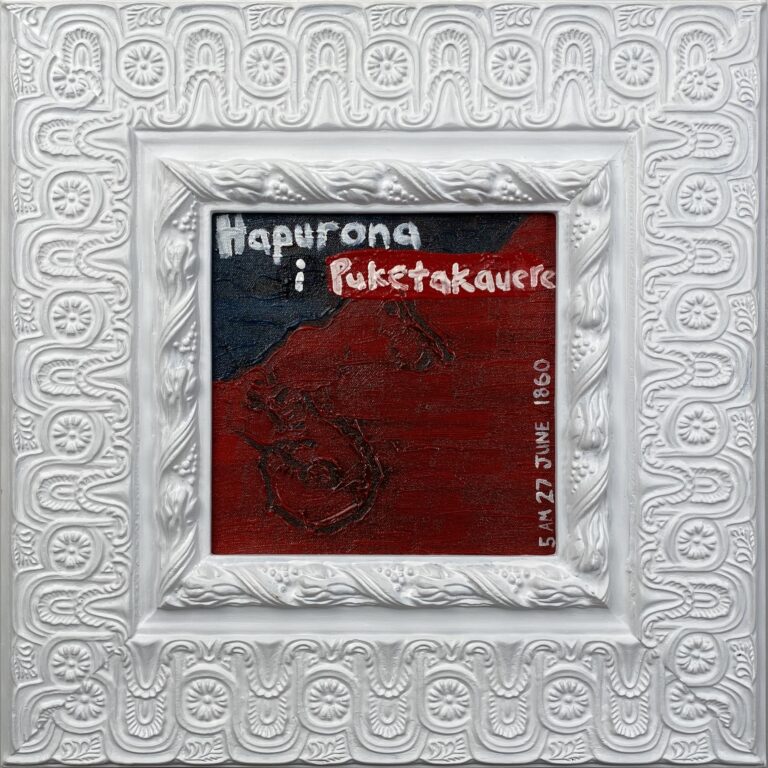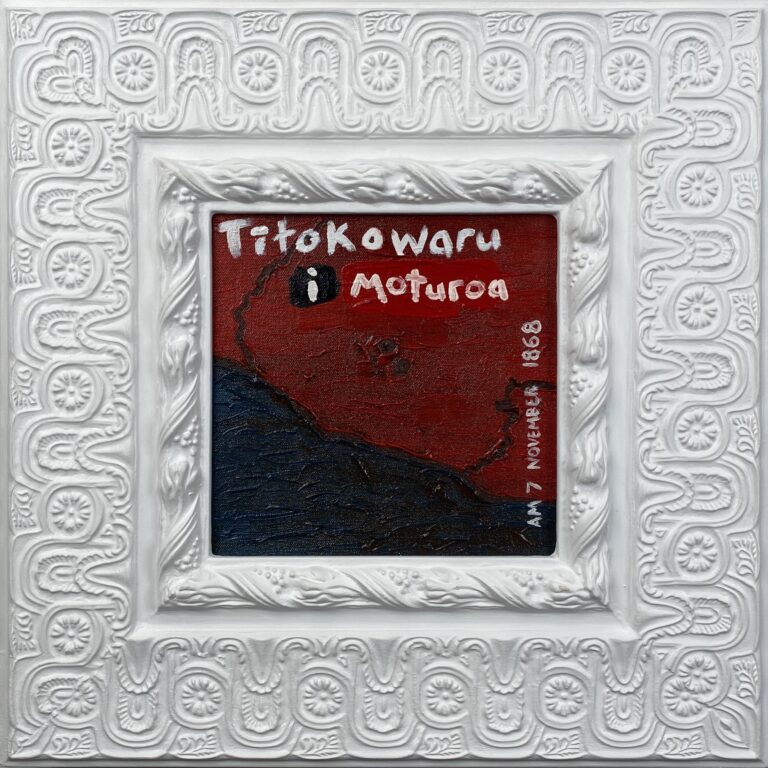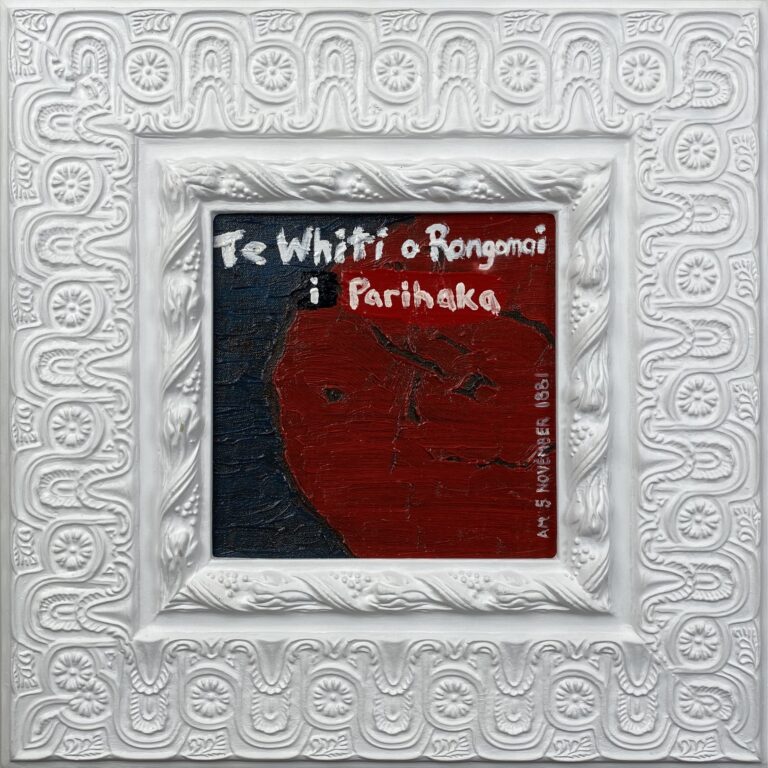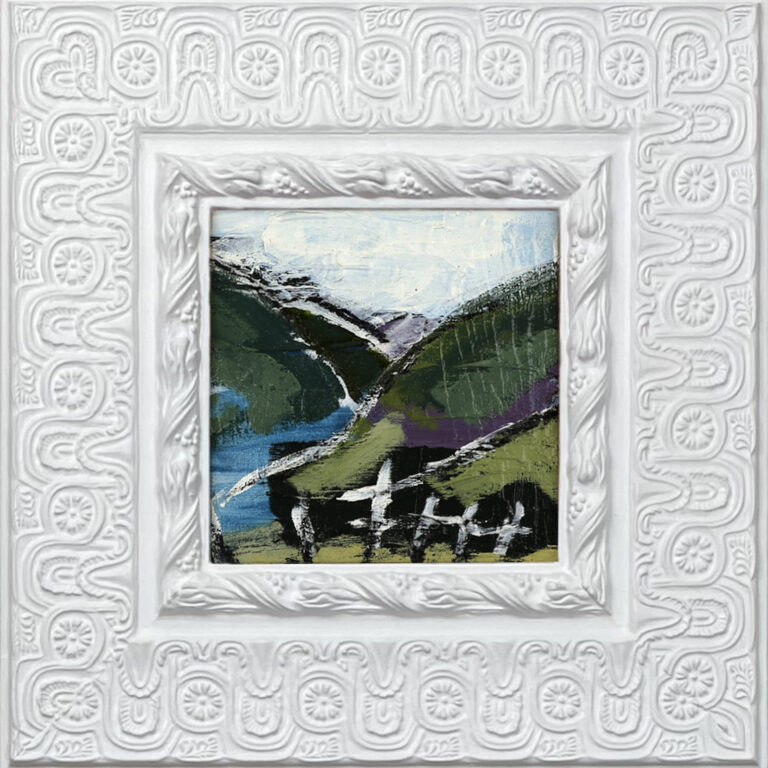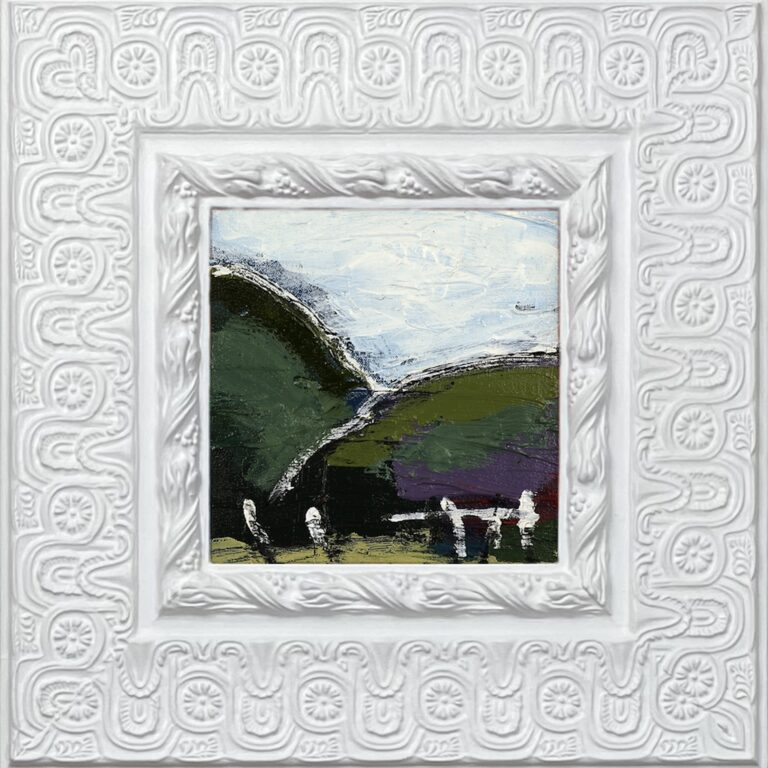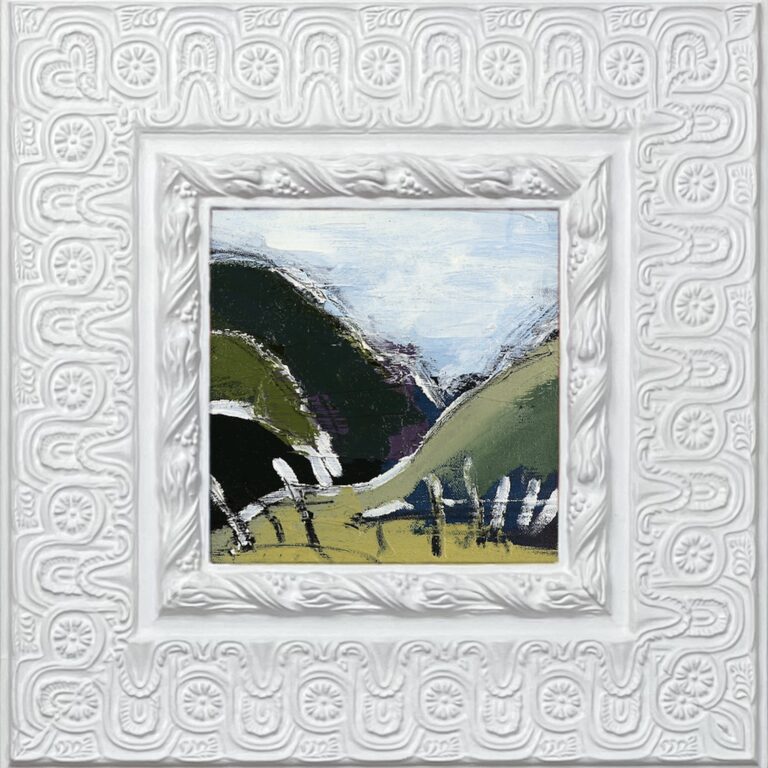1 – Tahi
Dimensions
- Painting 200x200mm
- Framed dimensions 415x415mm
- $750
2 – Rua
Dimensions
- Painting 200x200mm
- Framed dimensions 415x415mm
- $750
3 – Toru
Dimensions
- Painting 200x200mm
- Framed dimensions 415x415mm
- $750
4 – Whā
Dimensions
- Painting 200x200mm
- Framed dimensions 415x415mm
- $750
5 – Rima
Dimensions
- Painting 200x200mm
- Framed dimensions 415x415mm
- $750
6 – Ono
Dimensions
- Painting 200x200mm
- Framed dimensions 415x415mm
- $750
7 – Whitu
Dimensions
- Painting 200x200mm
- Framed dimensions 385x385mm
- $750
8 – Waru
Dimensions
- Painting 200x200mm
- Framed dimensions 385x385mm
- $750
9 – Iwa
Dimensions
- Painting 200x200mm
- Framed dimensions 385x385mm
- $750
10 – Tekau
Dimensions
- Painting 200x200mm
- Framed dimensions 385x385mm
- $750
11 – Tekau mā tahi
Dimensions
- Painting 200x200mm
- Framed dimensions 385x385mm
- $750
12 – Tekau mā rua
Dimensions
- Painting 200x200mm
- Framed dimensions 385x385mm
- $750
13 – Tekau mā toru
Dimensions
- Painting 200x200mm
- Framed dimensions 375x375mm
- $750
14 – Tekau mā whā
Dimensions
- Painting 200x200mm
- Framed dimensions 375x375mm
- $750
15 – Tekau mā rima
Dimensions
- Painting 200x200mm
- Framed dimensions 375x375mm
- $750
16 – Hapurona i Puketakauere
Dimensions
- Painting 200x200mm
- Framed 410x410mm
- $650
Aerial View of Key Battle in the NZ Wars
Early on the morning of 27 June 1860, on the West Coast of the North Island, Major Thomas Nelson of the British colonial forces and 350 men, set out to attack the fortified pā at Puketakaurere. They suffered an embarrassing defeat at the hands of chief Hapurona and around 150 men who lay waiting in rifle pits on their flanks.
17 – Rāwiri Puhirake i Pukehinahina
Dimensions
- Painting 200x200mm
- Framed 410x410mm
- $650
Aerial View of Key Battle in the NZ Wars
At daybreak on 29 April 1864, British Lieutenant-General Duncan Cameron ordered an attack on Pukehinahina (Gate Pā, Tauranga) which began with an artillery barrage followed by an infantry assault however Rāwiri Tuaia Puhirake had gathered 250 Māori at Pukehinahina to resist the British encroachment. They defended the pā from a network of underground anti-artillery bunkers and concealed trenches, causing heavy casualties for the British.
The British retreated leaving their dead and wounded behind. Overnight, wounded British soldiers were tended to by Māori, and most of the defenders escaped. The next day, the British found the pā abandoned. Thirty-five British regulars died during the engagement and 75 were wounded.
18 – Tītokowaru i Te Ngutu
Dimensions
- Painting 200x200mm
- Framed 410x410mm
- $650
Aerial View of Key Battle in the NZ Wars
The Prussian soldier of fortune Gustavus Ferdinand von Tempsky’s exploits during the battles of the 1860s had made him a folk hero for many European settlers. On 7 September 1868, as part of the Armed Constabulary commanded by Thomas McDonnell, he attacked Tītokowaru’s forest stronghold, Te Ngutu-o-te-manu. The troops out numbered Tītokowaru’s force six to one but were severely beaten with around twenty troops killed. McDonnell ordered a retreat but Von Tempsky was killed outside the pā before he received this order.
19 – Tītokowaru i Moturoa
Dimensions
- Painting 200x200mm
- Framed 410x410mm
- $650
Aerial View of Key Battle in the NZ Wars
On 7 November 1868, a group consisting of 250 Armed Constabulary and 300 Whanganui Māori set out towards Moturoa. Although the pā appeared to be only partially constructed, the site had concealed firing trenches and low towers made of packed earth.
Tītokowaru’s force waited until the last possible moment before unleashing a devastating attack on the exposed party. The ambush resulted in heavy casualties, with most of the attacking force lying dead or wounded within just a few minutes. The defenders then moved into hidden rifle pits on the flanks, maintaining a heavy fire that forced the attackers to retreat.
The casualties were significant; the attacking force lost 19 men killed and 20 wounded, while Tītokowaru’s force lost only one.
20 – Te Kooti i Tūranganui-a-Kiwa
Dimensions
- Painting 200x200mm
- Framed 410x410mm
- $650
Aerial View of Key Battle in the NZ Wars
Te Kooti was one of hundreds who were exiled to the remote Chatham Islands. During his time in exile, his land at Matawhero in Tūranganui-a-Kiwa (Poverty Bay) had been occupied by Major Reginald Biggs and the prominent trader George Read had also taken land in the settlement.
On 9 November 1868, shortly before midnight, Te Kooti and approximately 100 men launched an attack on Matawhero. By dawn, nearly 60 people had been killed, including roughly equal numbers of Māori and Pākehā from Matawhero and the adjacent kāinga (village). While some were shot, most were killed with bayonets, tomahawks, or patu to avoid alerting their neighbours.
21 – Te Whiti o Rongomai i Parihaka
Dimensions
- Painting 200x200mm
- Framed 410x410mm
- $650
Aerial View of Key Battle in the NZ Wars
Parihaka, established in the mid-1860s, became a sanctuary for Māori who had been dispossessed of their land. Te Whiti-o-Rongomai and Tohu Kākahi, both from the Taranaki and Te Āti Awa iwi, were the main leaders. In May 1879, the colonial government tried to occupy confiscated land on the Waimate Plains. Te Whiti and Tohu developed non-violent resistance tactics, and ploughmen from Parihaka spread across Taranaki to claim Māori ownership of the land. The government passed laws targeting the protesters and imprisoned hundreds of ploughmen without trial.
On 5 November 1881, around 1600 troops marched on Parihaka, which had become a symbol of peaceful resistance to the confiscation of Māori land. Native Minister John Bryce led the force, and as they arrived, several thousand Māori sat quietly on the marae while singing children welcomed them. Bryce saw Parihaka as a “headquarters of fanaticism and disaffection” and ordered the leaders’ arrest, destroyed much of the village, and forced most of its inhabitants to disperse.
22 – Rua tekau mā rua
Dimensions
- Painting 200x200mm
- Framed 410x410mm
- $750
23 – Rua tekau mā toru
Dimensions
- Painting 200x200mm
- Framed 410x410mm
- $750
24 – Rua tekau mā whā
Dimensions
- Painting 200x200mm
- Framed 410x410mm
- $750
25 – Rua tekau mā rima
Dimensions
- Painting 200x200mm
- Framed 410x410mm
- $750
Exhibition
The show opened at Comber Street Studios, 5 Comber Street, Paddington, 6pm Friday 31 March 2023 and ran for three days to Sunday 2 April.
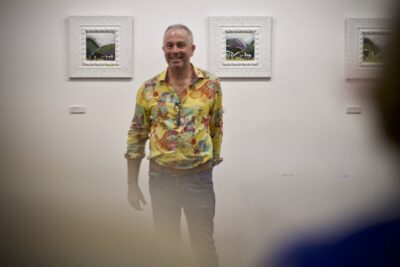
Shop
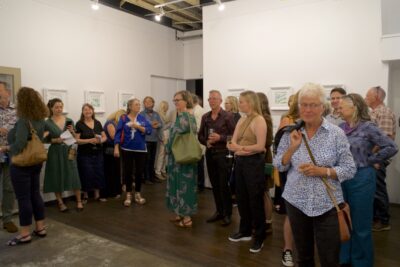
Feel free to subscribe to the email list. I’ll only send you occasional emails about new work or exhibitions.
The Story
For some years now, my paintings have been exploring a connection to the New Zealand landscape, that, as someone from a colonial heritage, I didn’t feel was mine to fully embrace – but then I received some surprising DNA results…
It turns out, I have a different biological father than I thought, revealing Māori ancestry that connects me to the Ngāi Tahu people of Te Waipounamu, the South Island of New Zealand, an area with some of the most glorious, mountainous landscapes in the country.
The sense of belonging I was searching for, through the repeated motif of the lines and shapes of the hills in my work, was finally realised. This flipped my point-of-view, from that of an outsider looking in, to someone with a genuine ancestral connection to the hills of New Zealand.
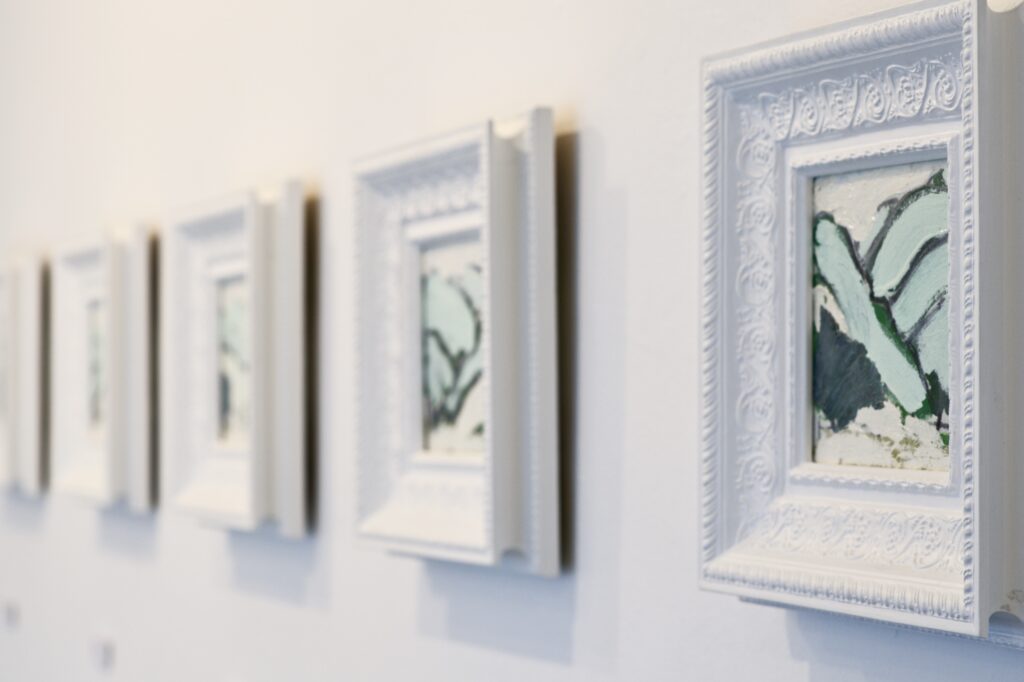
Names

Each painting has a link to its own permanent web page underneath the image. Comments are open on those pages so you are welcome to login in and start a conversation about a particular work – kind of old-school, pre-facebook, blogging style, enjoy.

